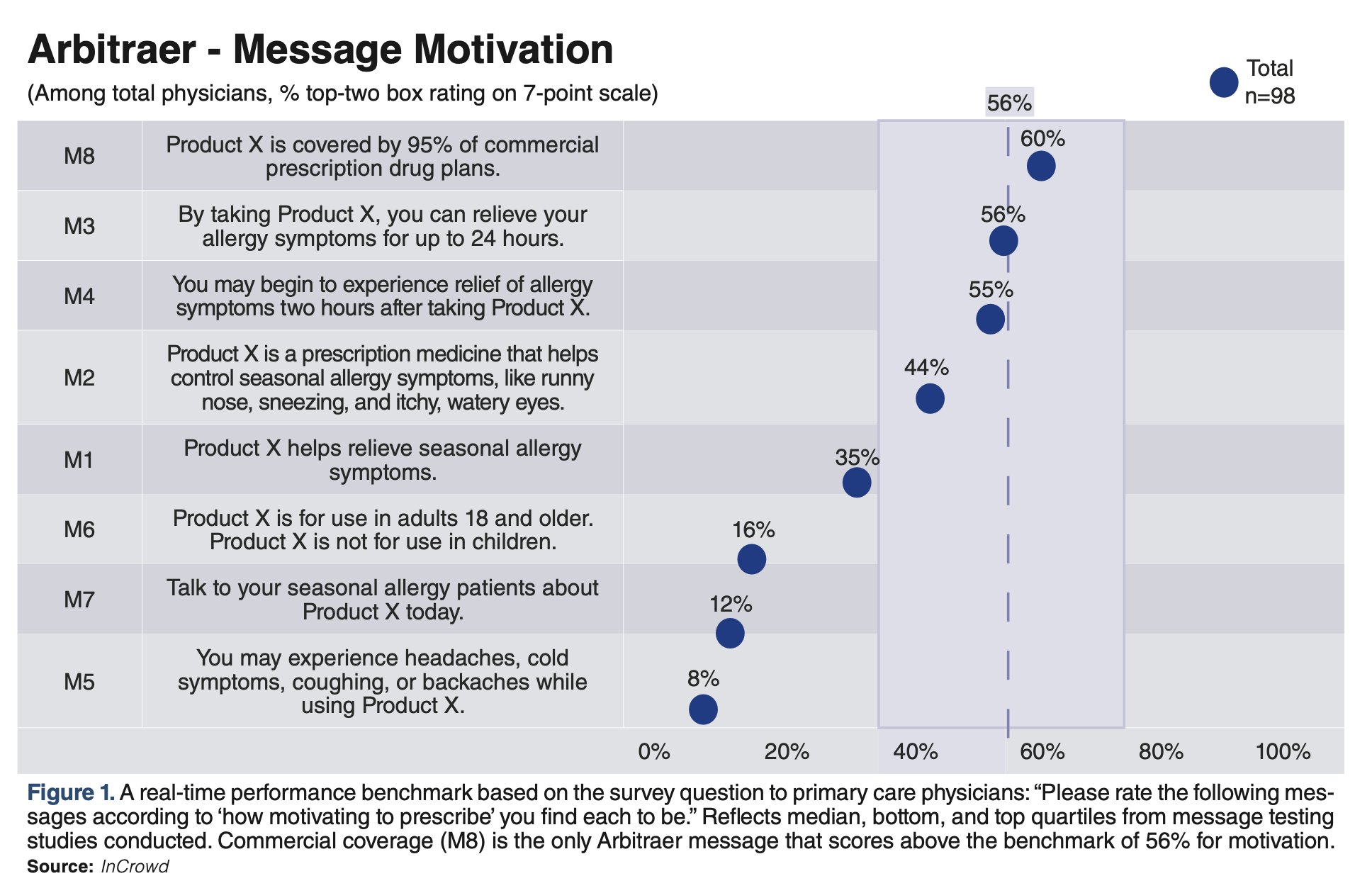How Good is a Good Product Launch?
A fresh look at how industry benchmarks can help fortify new drug launches to overcome today’s new market-entry barriers and higher expectations.

Executing a rigorous product launch is critical to any brand’s success in the market—and doing so has become progressively more difficult in recent years. Disruption to the healthcare system caused by COVID-19 has made it more challenging for life sciences brand leaders to connect with their prescribers, other healthcare professionals (HCPs), and patients. Recent data suggest that prescribers will engage in 20%–30% fewer pharma sales rep visits moving forward, as compared to their pre-COVID numbers.1 Other data show that the majority of prescribers now prefer hybrid models of virtual and in-person meetings with reps.2 The prescriber and patient dynamic has also evolved to a similar mix of virtual, in-person appointments, and remote-monitoring solutions.
These shifts are occurring at a time when pressures on pharma companies to increase speed to market couldn’t be higher. The promise of therapeutic innovations and greater FDA flexibility in streamlining approvals have increased consumer and market expectations. Launches are being held to new standards for speed and quality, at a time when assessment for launch preparation has become more stymied than ever.
A successful pharma launch requires insight from prescribers, HCPs, and patients. To ensure this feedback is clear, brand leaders rely on industry benchmarks as a best practice. Understanding how benchmarks can be leveraged can help brands navigate today’s new world order with speed and agility that sets them apart.
How benchmarks improve assessment
Benchmarks fortify aspects of launch that were previously at risk of falling short. They help brand leaders:
- Understand the results of peer comparisons and know what “good” looks like.
- Frame their analysis by providing context, ensuring results are viewed through the right lens.
- Provide credibility by offering social proof and demonstrating that the research vendor is proficient in methodological best practices.
- Save on costs, as honed benchmarks can reduce the need for competitive intelligence research.
Knowing what is ‘good,’ and what isn’t
What’s “good” for a product launch is as good as the benchmarks used. Quality benchmarks are developed through a nuanced methodology requiring a combination of precision and choosing appropriate comparative data. The textbook requirements below are table stakes that teams should presume the competition is also using:
- Large, varied sample sizes—sourced from many studies, supporting many manufacturers.
- Relevant, comparable data—data of similar intent, study type, data collection method.
- Timely research—using fresh data that reflects more accurate results.
- Data delivered meaningfully in reporting—item level, median, and quartiles for easy consideration.
To set the brand apart, benchmarks can be even further enhanced by including relevant therapeutic areas, specialties, and specific time periods. Other considerations—such as understanding negative trade-offs, and assessing what’s being tested and optimizing for the most “special” aspect of the brand’s market—can also refine the benchmark.
When these comparative metrics are applied to pharma launch activity results, the benchmarks provide a strong assessment tool to measure relative effectiveness of the activity. Message and concept testing, prescribing perceptions, and sales rep effectiveness can all benefit from strong benchmarks.
For example, a survey that was fielded by InCrowd (a subsidiary of Apollo Intelligence) in June asked 98 US-based primary care physicians (PCPs) who treat patients with seasonal allergies to provide their insights on an allergy medication ad. Conducted to illustrate agile benchmarking and unbeknownst to respondents, an FDA example ad for the drug Arbitraer was chosen as a way to explain what not to do for pharma ad messages. Insights were sourced in under five hours by respondents completing a five-minute microsurvey, then ranking eight messages conveyed in the ad.
Compared against the company’s industry median of 56% of prescribers considering a pharma ad motivating across all studies in the past year, only one of the eight Arbitraer drug messages tested above the benchmark (see Figure 1 below). When further compared against the normative quartiles of message testing data in the past year, the benchmark showed that none of the ad messages is unique. Without testing against benchmarks, and particularly in quartiles, this example launch team may never have known that its messages were not differentiating—knowledge that is vital to have before the time-consuming marketing and spending steps begin.

Moving toward more successful launch preparation
New barriers and higher expectations make it imperative to rethink launch activities at a granular level—including the metrics used to define success. Using historical data-driven benchmarks combined with real-time insights provide an enhanced, powerful way to set comparative expectations for quality launch deliverables designed to support revenue goals, using a fresh read on prescriber and patient perceptions.
Dan Fitzgerald, CEO and President of Board of Directors, Apollo Intelligence
References

The Misinformation Maze: Navigating Public Health in the Digital Age
March 11th 2025Jennifer Butler, chief commercial officer of Pleio, discusses misinformation's threat to public health, where patients are turning for trustworthy health information, the industry's pivot to peer-to-patient strategies to educate patients, and more.
Navigating Distrust: Pharma in the Age of Social Media
February 18th 2025Ian Baer, Founder and CEO of Sooth, discusses how the growing distrust in social media will impact industry marketing strategies and the relationships between pharmaceutical companies and the patients they aim to serve. He also explains dark social, how to combat misinformation, closing the trust gap, and more.